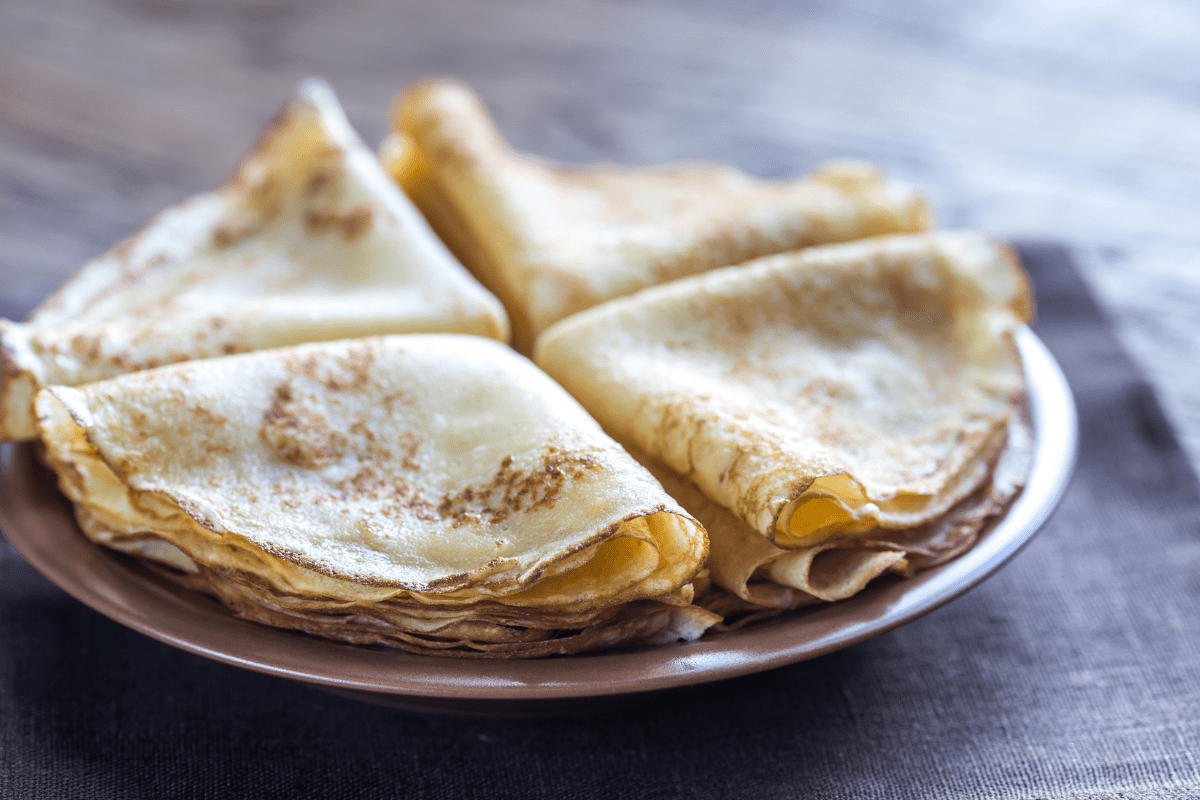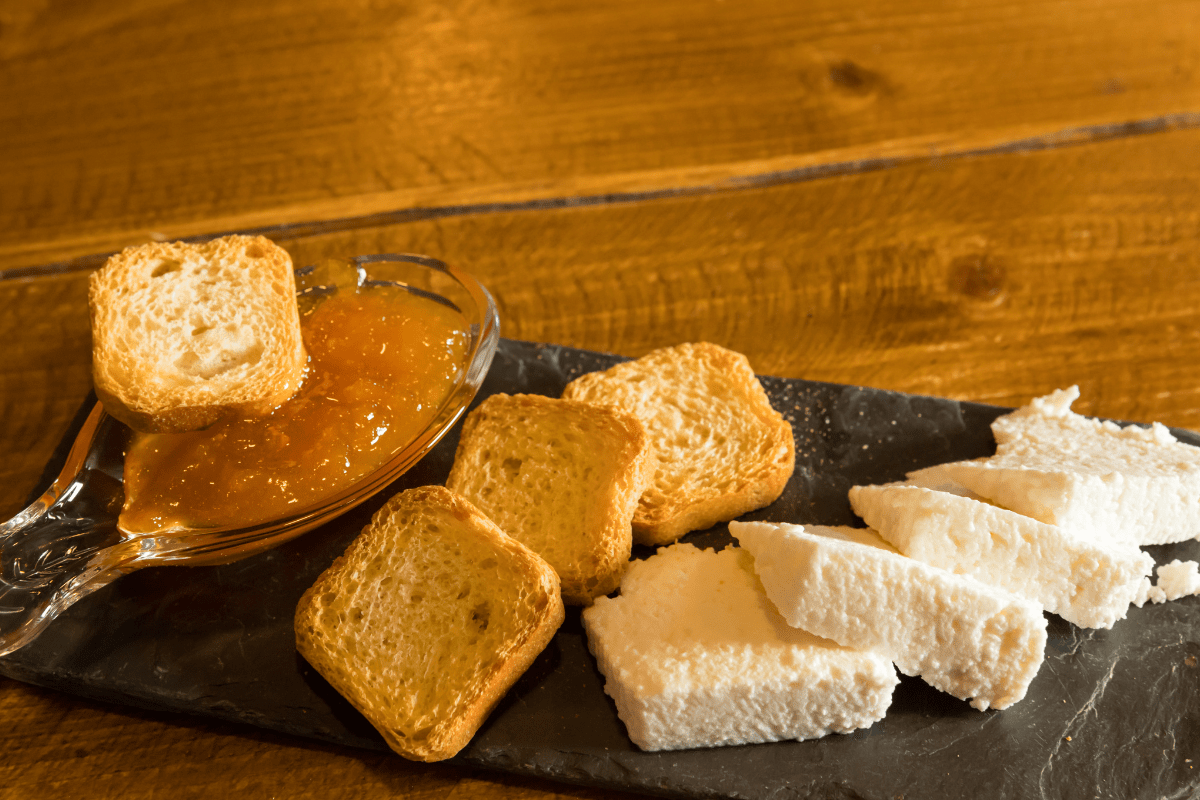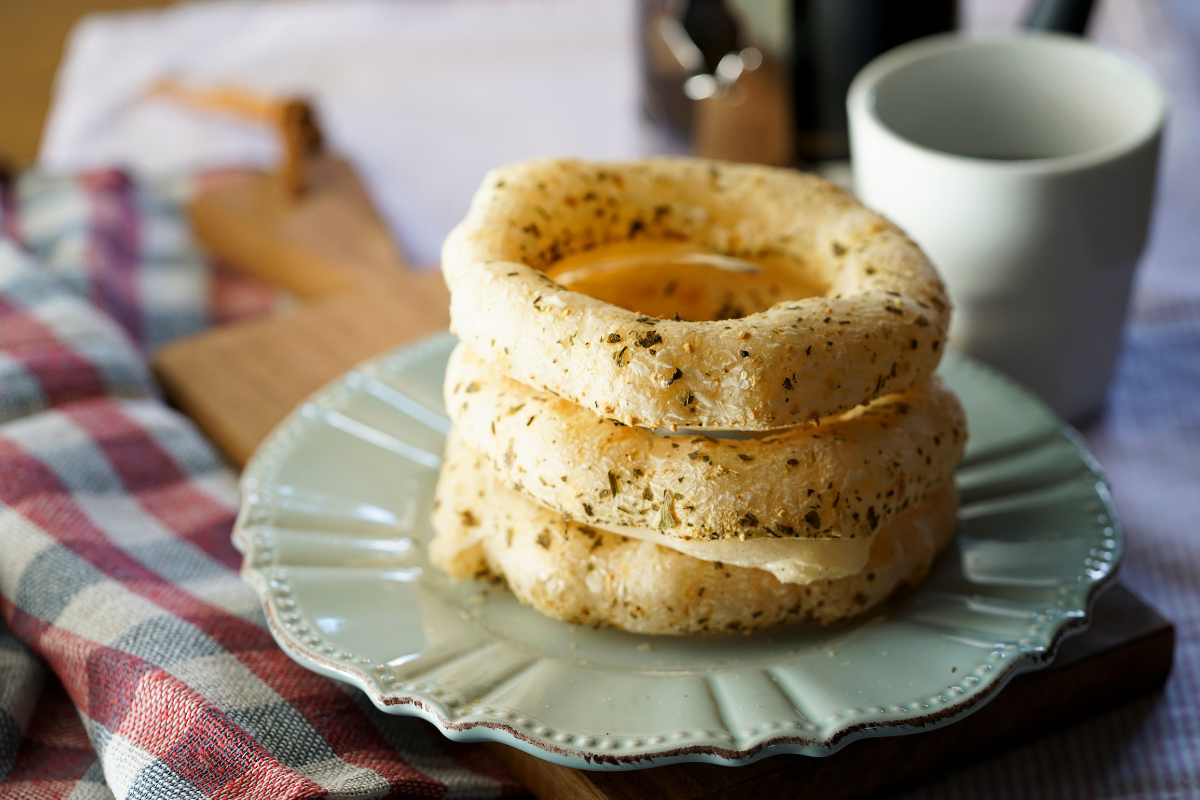
In the US, pancakes are almost always thought of as a sweet breakfast food. Our versions are fluffy and loaded with syrup, fruit, or even chocolate syrup. In other parts of the world, however, savory pancakes are often eaten for any meal of the day. In Brazil, for example, thin pancakes are used in a dish similar to Mexican enchiladas. These panquecas de carne are traditionally filled with seasoned ground beef and topped with a flavorful sauce and melted cheese.
While these Brazilian enchiladas are delicious, we have a feeling that most Americans will still be wary of having a pancake dish any other time of day besides breakfast or brunch. And ground beef and melted cheese is a little heavy for a morning meal. So we will borrow the savory pancake and change up the filling to something brunch-friendly.
Our Brazilian panquecas will be filled with a glorious mixture of bacon, caramelized onions, granny smith apples, and melted gruyere cheese. We will top off our crepes with a little creme fraiche and fresh dill. Paired with an ice-cold passion fruit caipirinha and, trust us, you won’t want to have brunch any other way.
The pancakes for this recipe are actually more similar to crepes, since they are meant to be almost paper-thin. Unlike American pancakes, crepes do not use a raising agent (such as baking powder). This gives them a much thinner, somewhat chewier texture. They are extremely simple to make and each one cooks up quite quickly. Make sure you are continually greasing your skillet to keep them from sticking.
Savory Pancakes for Brunch (Panquecas de Carne)
Ingredients:
For the pancakes
2 cups flour
2 eggs
1 cup milk
1 cup water
½ tsp salt
2 oz melted butter
For the filling
16 oz thick cut bacon, cut into bite-size pieces
½ yellow onion, minced
2 granny smith apples, cut in thin slices
1 tsp sugar
Pinch of salt
1 cup gruyere cheese, shredded
Directions:
- Heat a skillet over medium heat. Cook bacon until it is browned and crisp, but not crunchy. Strain the bacon on paper towels on a separate dish.
- Discard all but one or two tsp of the bacon grease. Return the skillet to the stove but lower the heat to medium. Add in a drizzle of extra virgin olive oil.
- Add in the minced onion, sliced apples, sugar, and pinch of salt.
- Cook over medium heat, stirring occasionally, until the apples and onions are soft and caramelized.
- Once the apples and onions have caramelized, remove the pan from the heat and stir in the reserved bacon. Sprinkle in the gruyere cheese and mix until it is melted throughout. Put the mixture aside.
- In a mixing bowl, whisk together the flour, milk, eggs, water, salt, and melted butter. Heat a second skillet over medium high heat and grease well with non-stick spray, oil, or melted butter.
- Ladle in enough batter to evenly coat the entire bottom of your pan. You can swirl the pan slightly to get an even layer.
- Cook one side for about two minutes, then flip to the other side. Continue until you have used up all of your batter.
- Fill each of your crepes with the bacon and apple filling. Try not to over-fill them, since they are fragile. Put a heaping spoonful in the middle, then fold the edges toward the center until you have a triangle shape.
- Serve the panquecas warm and with a dollop of creme fraiche on top. Garnish with fresh dill, parsley, or chives.
Enjoy!




